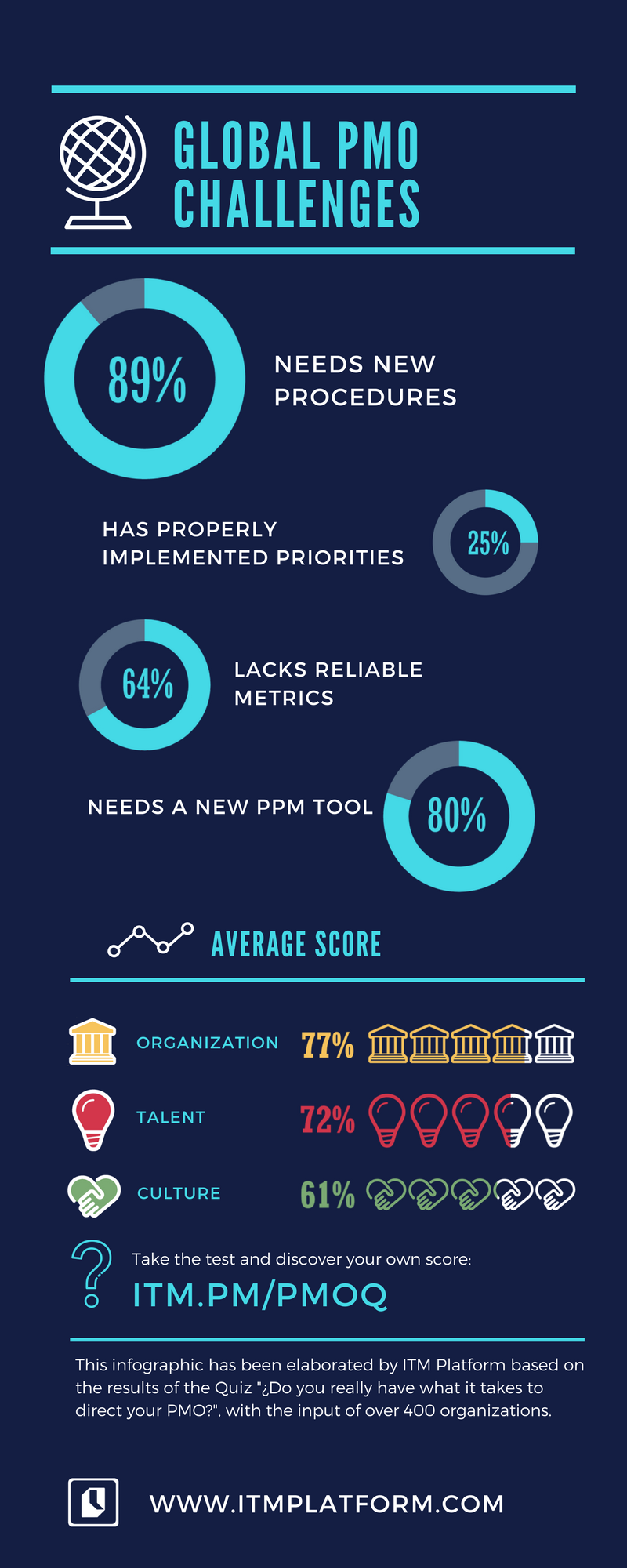
When you have limited visibility, limited resources and capacity planning, or when you are missing a consistent methodology, you usually start building a PMO. However, it is necessary to ask yourself the relevant questions that will assure its success and meeting the objectives. In fact, only 40% of projects met schedule, budget and quality goals (IBM Change Management Survey of 1500 execs). In this article, we are going to see the key characteristics of those 40% and the important questions to ask to make sure you’re going in the right direction.
Download our new eBook: how to set up a sustainable PMO with ITM Platform
How do you define a good PMO?
Regardless of the PMO you choose, there are four universal parameters that are markers of quality and excellence:
1. Provides clarity
Because of its objective and unbiased audits, the PMO is a source of transparency and intelligent analysis. It doesn't just throw data at you.
2.Facilitates decision-making
Gives senior management oversight of the portfolio allowing them to make coherent decisions. Imagine your company is a car, the PMO provides the headlights that allow you to decide whether you need to turn left or right or even to stop. And how quickly to do so.
3.Enhances accountability
The PMO defines roles and responsibilities, motivating and empowering people; ultimately this will also allow them to be held accountable.
4.Encourages shared ownership of goals
The biggest challenge for a PMO is to be accepted within the organization. Sharing the vision and expected benefits is a good way to get stakeholders on board.
4 questions to help you plan the future of our PMO
These four questions might help to plan the future of our PMO:
1. Which projects should we pursue?
Or, which are the projects that meet our organization’s goals in the most efficient way?
2. Which projects should we start?
Out of all the project proposals in front of us, which should we prioritize? What’s the best way to plan ahead and optimize resource allocation?
3. Which projects should we continue?
Looking at the projects already in place, which of them are accomplishing what's expected of them? Which of the non-performers should continue?
4. Which projects should we kill?
Following on from the previous question, which projects aren’t worth continuing because the resources would be better employed elsewhere?
To answer these questions, the PMO should align its PPM (project portfolio management) processes with your company goals. Managing the portfolio of projects means asking every day: how are the projects, programs and portfolios facilitating the achievement of my company’s goals? If you can offer real-time information about on-going projects that help with decision-making the PMO will quickly win supporters.
Define the value that you expect a PMO to add
1. Governance
2. Organization
3. Planning
4. Cost Management
5. Asset Management
6. Risk Management
7. Information
8. Quality Management
9. Change Managment
10. Resource Management
11. Communication Management
12. Procurement
13. Document Management
Depending on the type of PMO on the table you will need to stress some aspects more than others. A strategic PMO will focus more on Governance, Organization and Planning, whereas a process-focused (tactical/operational) PMO should concentrate on Quality Management, Change Management and Document Management.
You cannot design a PMO without working out which model suits both the business and its clients.



